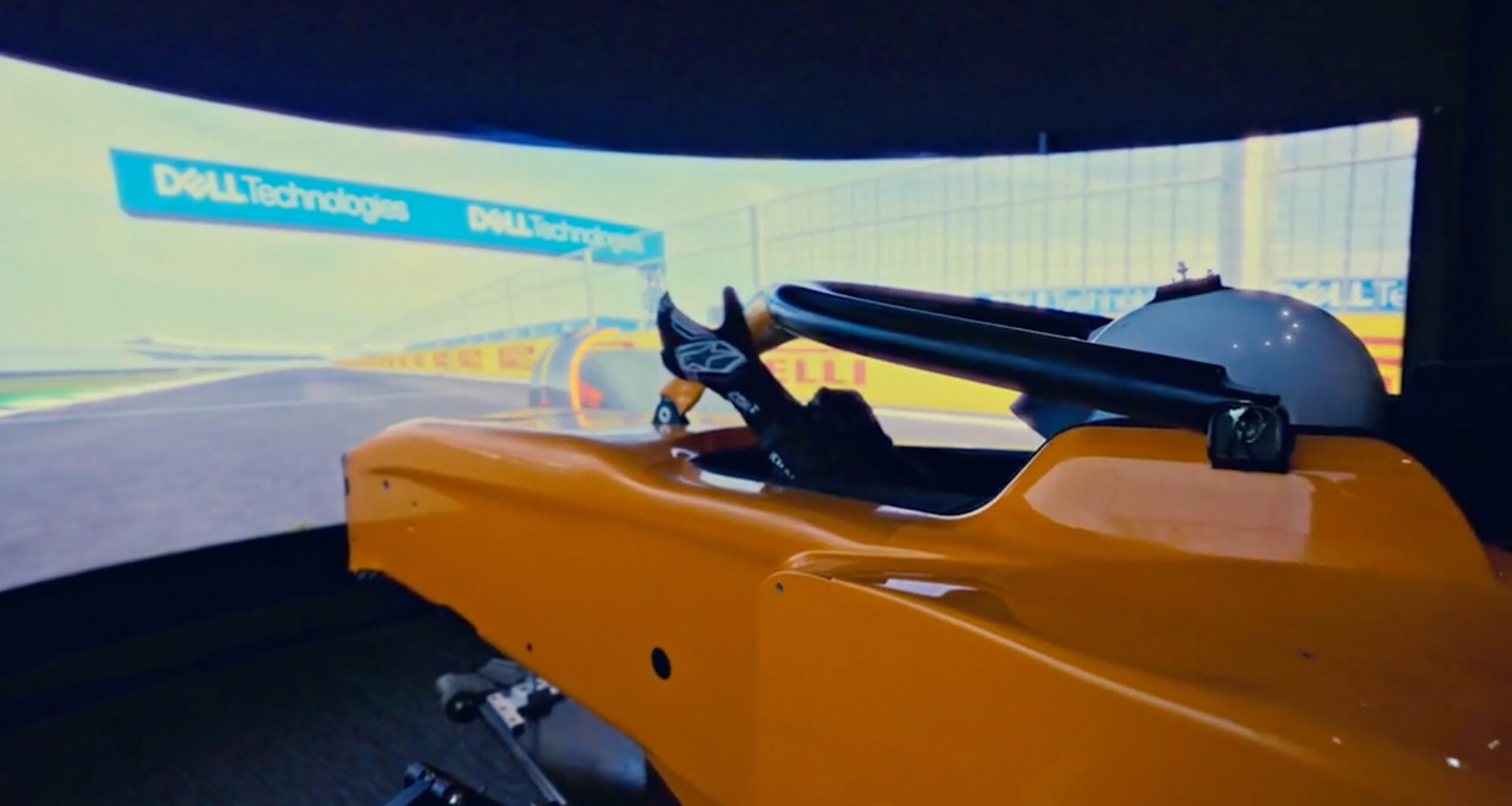Putting in the hours
Our class-leading, next generation simulator relies on high-end, bespoke-configured Dell hardware, with processing power specified to drive the motion platform and provide the graphics for the wrap-around display.
In some ways, the setup resembles a high-end gaming rig, but where the simulator really diverges is in the underlying vehicle model. While racing games can be impressively detailed, they often take a pragmatic approach to vehicle dynamics. Our car model, however, is as faithful as physically possible to the MCL39.
Will spends around 50 days a year in the simulator, and while track support may be less intense than development work, he’ll still emerge red-eyed, having put in perhaps 150 laps across the session – more than double a race distance – with the hours after FP2 having the most intense workload.
“That’s where the main pressure comes,” says Will. “We have a window of two or three hours post-FP2. There’s a chassis performance review at the track, and we have to feedback the information we’ve gathered in our day, into that meeting.
“At that point, decisions are made on how the car is going to be put together for FP3 [the final 60 minutes of practice held on Saturday, before Qualifying]. We’ve therefore got a deadline to work to. We try to squeeze in as many runs and tests as we can, and generally be as productive as possible to feed as much information as we can into that meeting.
“This is the main part of the job – but the very last part of my day is to test that setup for FP3 to provide feedback to the trackside team for when they arrive at the track the following morning.”

